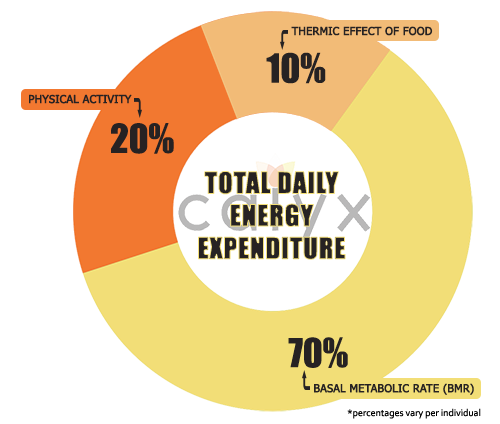Did you know there’s a way to eat more, exercise less, and still lose weight? All calories are not created equal!
 TEF, or the Thermic Effect of Food, is often misunderstood and underestimated. TEF is the proportion of food’s energy intake that your body burns to metabolize the food. The higher the TEF, the harder it is for your body to harvest energy from food.
TEF, or the Thermic Effect of Food, is often misunderstood and underestimated. TEF is the proportion of food’s energy intake that your body burns to metabolize the food. The higher the TEF, the harder it is for your body to harvest energy from food.
This means your body uses more energy to digest and process higher TEF foods, which means you get to eat more- not less calories- and get better results! Foods with higher TEF also help with satiety (being less hungry) throughout the day!
Lower body fat percentage is also beneficial for TEF. Strength trainers can see a rise up to 25% based on body fat percentage, carbohydrate tolerance, and food type.
TEF is highest in protein (up to 20%) and mixed meals have a higher TEF than eating foods in isolation such as just fats or carbs. So, a balanced meal of protein with some fats and carbs has the best TEF effect.
Saturated vs Unsaturated Fats
More than just the type of food, but also the type of fat you eat affects TEF. Unsaturated fatty acids have a higher Thermic Effect than saturated fatty acids. Omega-3 fatty acids can also increase the Thermic Effect of a meal by over 50%! So, consuming fats from foods such as fish, seeds, or nuts are better in terms of TEF.
Moreover, the TEF of processed foods is lower than that of whole foods such as eggs, fruits, vegetables, seeds, nuts, legumes and whole grains.
So, what’s the bottom line? We all want to be able to eat more, feel satisfied, and have high energy levels. Incorporating foods closest to their original state, and high in unsaturated fats, into your meals is best to raise TEF.
calyx health and fitness takes TEF into account when creating dietary programs to ensure you get not just enough calories, but the RIGHT calories, to maximize your results.
